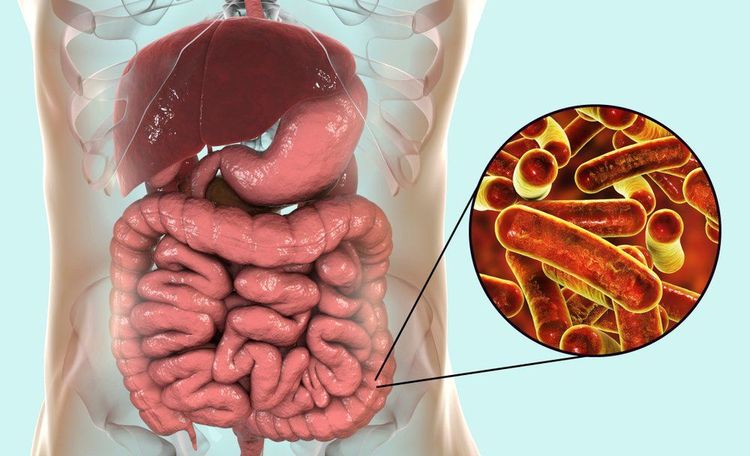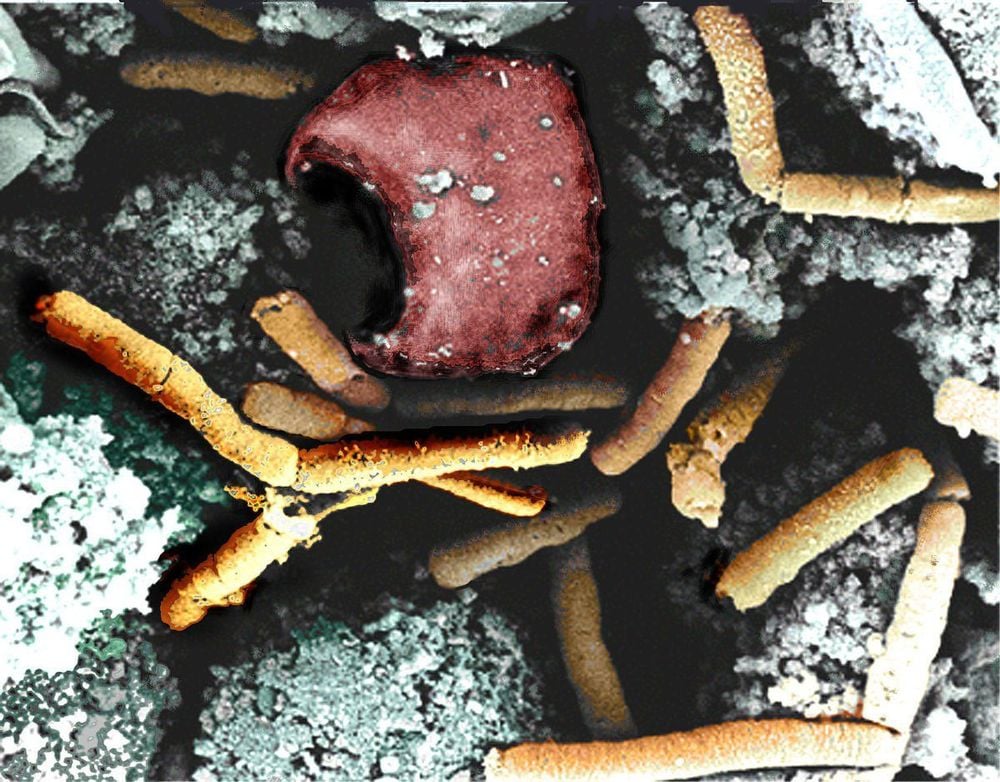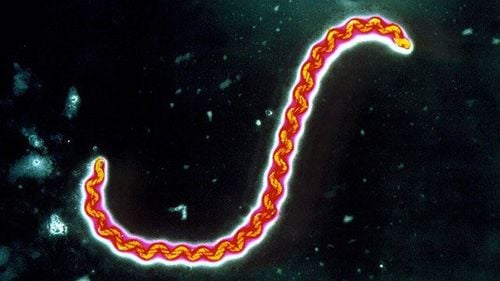This is an automatically translated article.
The article was professionally consulted with Senior Doctor, Dr. Vu Van Tam - Infectious Internal Medicine - Department of Medical Examination & Internal Medicine - Vinmec Ha Long International General Hospital.Communicable diseases are classified into several categories including group A infectious diseases, group B infectious diseases and group C infectious diseases. If not detected and effectively isolated, infectious diseases can cause serious consequences. severe consequences for the sick or outbreak into a large epidemic.
1. What is a group B infectious disease?
Infectious disease is a disease that is transmitted directly or indirectly from person to person or from animal to person, caused by an infectious disease agent. Infectious pathogens can be viruses, bacteria, parasites, and fungi. Group B infectious diseases are dangerous, highly contagious and potentially fatal diseases.
2. List of infectious diseases group B
Adenovirus disease Adenovirus disease is an acute disease with a diverse clinical syndrome, patients often have acute viral infections in the upper respiratory tract with symptoms The predominant symptom is rhinitis. In special cases, viruses that cause diseases in the lower respiratory tract include: small bronchiolitis and pneumonia.
Disease caused by the virus HIV/AIDS (Human Acquired Immunodeficiency Syndrome) HIV infection is divided into 4 stages, depending on the related diseases such as: weight loss, opportunistic infections , malignancies, level of physical activity. The causative agent of the disease is the human acquired immunodeficiency virus (HIV).

Bệnh HIV/AIDS
Diphtheria Diphtheria is an acute bacterial infection of the pharynx, tonsils, larynx, and nose. The disease can appear on the skin or other mucous membranes such as conjunctiva of the eyes, genitals. Severe lesions of the disease are mainly caused by bacterial exotoxins.
Influenza Influenza is an acute viral infection of the respiratory tract with common manifestations: fever, headache, muscle aches, fatigue, runny nose, sore throat and cough. Cough in influenza is often severe and prolonged, may be accompanied by gastrointestinal symptoms (nausea, vomiting, diarrhea) especially in children.
The disease is usually mild, recovers within 2-7 days. In children, the elderly, people with chronic diseases or immunocompromised people, flu can become more severe, such as ear infections, bronchitis, pneumonia, encephalitis, and even death. .

Người mắc bệnh cúm với triệu chứng ho, đau họng
Rabies Rabies is an acute viral infection of the central nervous system. The disease is transmitted from animals to humans by secretions, usually saliva, contaminated with the rabies virus. Most exposure to rabies is through the bite or lick of an infected animal. Occasionally rabies can be acquired through contact such as inhalation of aerosols or transplantation of newly infected rabies virus. Once rabies occurs, both animals and humans lead to death.
Whooping cough Pertussis usually begins 1-2 weeks after being passed on from another child with whooping cough. The onset of the illness resembles a cold: fever, runny nose and cough, followed by a bout of whooping cough 2 weeks later. Children with pertussis have symptoms of coughing, many times, not having time to breathe, coughing until they spit out a thick mucus, then the child inhales air into the lungs with a hissing sound. When coughing, the baby's lips and fingernails are purple because of the lack of air, and after the cough, they may vomit. Between coughs, a child with whooping cough most likely looks healthy. Whooping cough usually goes away after three months or so. Whooping cough is especially dangerous for children under the age of 1, so it's important to get vaccinated early.

Người bệnh xuất hiện sốt cao
Pertussis vaccination in infants
Pulmonary tuberculosis Tuberculosis can be found in all parts of the body such as: pleura, lymph nodes, meninges, bones, joints, peritoneum, urinary system, intestines... in which TB is Lungs are the most common (80-85%) and the main source of infection.
Human Swine Streptococcal Disease Swine Streptococcus is caused by Streptococcus suis and can be transmitted to humans. Although S.suis infection is rare in humans, people are still at risk of infection and disease outbreaks when they come into contact with sick pigs or products from sick pigs. Manifestations of the disease are: meningitis, hemorrhage, pneumonia, myocarditis and arthritis. Severe patients can die from bacterial toxins causing septic shock, endocarditis, multi-organ failure, sepsis... The mortality rate can be up to 7%.
Amoebic dysentery Amoebic dysentery is an intestinal infection that can be acute, fulminant or chronic. Lesions can be in extra-intestinal locations (liver abscess, pleural effusion...)
Bacillary dysentery Bile dysentery is an acute intestinal infection caused by Shigella bacteria. The disease has a variety of manifestations (25% with obvious dysentery syndrome, 25% with asymptomatic infections, most of the cases have only mild diarrhea, a few have a chronic course).

Bệnh lỵ trực trùng
Mumps Mumps is caused by the Mumps virus, which belongs to the genus Rubulavirus and the family Paramyxoviridae. The disease is widely distributed globally, but the incidence is higher in densely populated areas, low living standards, and cold climates.
Dengue hemorrhagic fever, Dengue fever Dengue virus (Dengue virus) that causes Dengue fever/ Dengue hemorrhagic fever belongs to the genus Flavivirus, family Flaviviridae, including 4 serotypes D1, D2, D3, D4. All four types can be found in Vietnam and alternately cause epidemics.
Malaria The causative agent is the malaria parasite (Plasmodium). There are four types of human parasites: P.malariae, P.vivax, P.falciparum and P.ovale. In Vietnam, there are 3 types: P. falciparum, P.vivax and P.malariae. There are 4 modes of transmission: by mosquito (mainly), by blood transfusion contaminated with malaria parasites, by mother to child through damaged placenta, by injection with syringe contaminated with blood with parasites.

Bệnh nhân xuất hiện triệu chứng sốt rét
Typhus fever consists of 3 main diseases: typhus caused by lice, lice or also known as classic typhus, rat typhus or local flea typhus mouse and mite typhus, also known as bush typhus.
Measles Measles is a contagious disease, causing widespread epidemics in all parts of the world, especially in the pre-vaccination era. The disease is common in children. Over 90% of people before the age of 20 have had measles, very rarely do not. An estimated 100 million cases and 6 million deaths are caused by measles every year.
Hand-foot-and-mouth disease Foot-hand-and-mouth disease is an infectious disease that can cause epidemics, occurring all year round, but is common in summer and autumn. The disease mainly affects children under 10 years of age, but can also affect adults. Young children, children and adolescents are very susceptible to infection and illness because they have few antibodies.
Anthrax Anthrax is an acute bacterial infection that affects the skin, rarely affecting the oropharynx, lower respiratory tract, mediastinum or digestive tract. The causative agent is the anthrax bacillus (Bacillus anthracis).

Trực khuẩn than (Bacillus anthracis) gây bệnh than ở người
Chickenpox A disease caused by a virus. When you spread the disease from another person, it will take 2-3 weeks for symptoms to appear. First there are many small, red, itchy bumps that become blisters, break open, and eventually scab over. Acne first appears on the body and then on the face, spreading to the hands and feet. There may be vesicles, blisters, and scabs at the same time with mild fever.
Typhoid Typhoid is an infectious disease caused by the bacteria Salmonella typhi. Sudden onset with persistent high fever, headache, fatigue, loss of appetite, slow pulse, constipation or diarrhea, dry cough. However, there are also mild cases or no symptoms. The incubation period depends on the amount of bacteria entering the body, on average from 8-14 days.
Recommended video:
Signs of typhoid fever and a vaccine to prevent it
Tetanus Tetanus is an acute disease caused by an exotoxin of the bacterium tetanus (Clostridium tetani) that develops in the wound under anaerobic conditions . Symptoms are muscle spasms accompanied by pain, first in the masticatory muscles, in the muscles of the face, in the muscles of the neck, and then in the trunk.
Rubeon's disease (Rubeon) Rubeon's disease is an acute viral infection. The disease begins with low-grade fever, headache, fatigue, mild exudative rhinitis and conjunctivitis of the eyes. Then, the lymph nodes behind the ear, occipital, and back of the neck swell and develop a rash for about 5-10 days. The rash appears on the face and then spreads to the whole body, almost like a measles or rash. About 50% of cases of rubella do not have a rash.

Bệnh Ru-bê-ôn (Rubeon) gây sốt nhẹ
Viral hepatitis There are many types of viruses that cause hepatitis. So far, the hepatitis viruses A, B, C, D, E have been identified.
Meningococcal disease Meningococcal disease Meningococcal disease is an acute bacterial infection that occurs suddenly with fever, severe headache, nausea/vomiting, stiff neck, often with stellate or vesicular purpura. There are cases of sudden fatigue, hemorrhagic plaques and even shock. If detected early and treated aggressively, the mortality rate is only from 5 to 15%.
Viral encephalitis Viral encephalitis is divided into two types: primary viral encephalitis and secondary viral encephalitis. Secondary viral encephalitis is a complication of viruses such as measles, mumps, influenza, herpes simplex... Primary viral encephalitis is caused by viruses with natural reservoirs, caused by insects. Viral encephalitis includes mosquito-borne viral encephalitis and tick-borne viral encephalitis.
Jaundice spirochetes Jaundice is a disease transmitted by animals to humans. The disease has many different clinical forms, from latent infection, mild form without jaundice or without meningitis to typical acute form, with severe jaundice.

Xoắn khuẩn vàng da
Diarrhea caused by Rotavirus (Rota). Rotavirus acute diarrhea is an acute viral disease, commonly seen in young children with symptoms of vomiting, diarrhea, abdominal pain, and dehydration. The disease can easily lead to cardiovascular collapse and death if not treated promptly.
Please dial HOTLINE for more information or register for an appointment HERE. Download MyVinmec app to make appointments faster and to manage your bookings easily.













